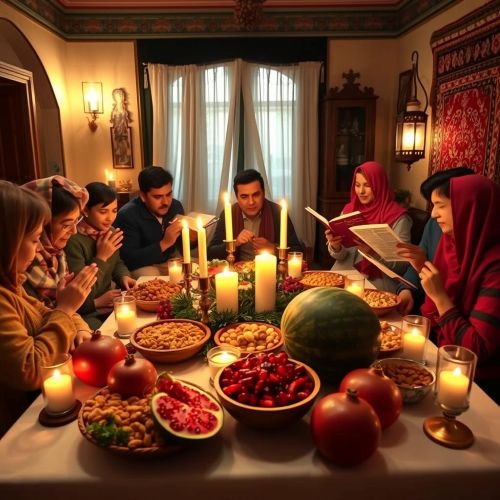Lupercalia : Celebration of Fertility
At a glance
| Description | |
|---|---|
| Location | Rome |
| Country | Italy |
| Dedicated To | Faunus, Lupercus |
| Duration | 1 day |
| Time of Year | February |
Introduction
Lupercalia was one of ancient Rome’s most distinctive and spirited festivals, held each year on February 15 to celebrate purification, fertility, and renewal. Originating in the early centuries of Rome’s formation, it was a festival that combined religious devotion, mythic remembrance, and civic unity. Its rituals, though wild by modern standards, were deeply symbolic of the transition from winter to spring and the renewal of life that followed. The very name of the month February derives from februa, meaning purification tools, directly linking the festival to Rome’s cleansing and fertility traditions.
Unlike other solemn Roman religious ceremonies, Lupercalia was charged with vitality and a touch of chaos. It was a day when social boundaries blurred, when priests ran through the streets clad in goatskins, and when fertility rites were celebrated openly in the heart of Rome. While many of its practices may seem alien today, Lupercalia reveals much about how ancient Romans viewed the relationship between humanity, nature, and divine power. It was a festival of transition—marking both the purification of the city and the renewal of the human spirit in harmony with the seasons.
Connection with Mythology
At the core of Lupercalia lies one of Rome’s most famous legends: the story of Romulus and Remus, the twin brothers who founded the city. According to myth, the twins were abandoned as infants by order of their great-uncle Amulius and set adrift on the Tiber River. Carried safely to shore by divine intervention, they were discovered by a she-wolf (lupa) who nursed and protected them in a cave at the base of the Palatine Hill—known thereafter as the Lupercal. This cave became the sacred site where the festival was held, honoring both the wolf that sustained Rome’s founders and the divine powers that preserved the city’s destiny.
Lupercalia was also linked to the god Faunus, Rome’s rustic deity of forests, flocks, and fertility, who was often equated with the Greek god Pan. In some traditions, the festival honored Lupercus, a protective pastoral god whose role was to ward off wolves from livestock and ensure abundance. Through these associations, Lupercalia united myth, agriculture, and the divine in one shared celebration of vitality and continuity.
The wolf symbolism reflected both danger and protection—wildness harnessed for the city’s good. To the Romans, the she-wolf’s nurturing of the twins symbolized the primal bond between nature and civilization, a theme that the festival re-enacted each year. The rites performed by the Luperci, or “brothers of the wolf,” reaffirmed this connection, invoking fertility for the people and safety for the land.
Main Activities
The celebration of Lupercalia began with elaborate rituals conducted by the Luperci, priests divided into two groups named after Rome’s early clans: the Fabii and the Quinctilii. The ceremonies took place at the Lupercal cave, believed to be near a shrine of Rumina, the goddess of nursing mothers, reinforcing the festival’s link to fertility and nurturing.
The rites began with the sacrifice of goats—symbols of fertility—and a dog, thought to represent purification. After the sacrifice, the foreheads of two young Luperci were smeared with the blood of the slain animals using a knife. The blood was then wiped away with wool dipped in milk, after which the priests were expected to laugh, signifying the purging of impurity and the joy of renewal.
A communal feast followed, and afterward, the Luperci cut strips of goatskin, known as februa, from the sacrificed animals. Wearing only these skins, they ran through the streets of Rome, striking bystanders—especially women—with the februa. Far from being viewed as violent, this ritual was believed to promote fertility, ease childbirth, and ensure healthy pregnancies. Many women would willingly stand in their path, eager to receive the symbolic blessing.
The ritual of running represented more than a simple fertility charm—it symbolized the physical and spiritual cleansing of the city. As the priests sprinted along the ancient boundaries of Rome, they were seen as carrying purification and renewal throughout the community.
Contrary to later myths, there is no historical evidence of romantic matchmaking or “love lotteries” being part of Lupercalia. Those ideas appeared much later in medieval Europe, when scholars sought to connect Valentine’s Day with the ancient Roman festival.
Importance in Cultural History
For centuries, Lupercalia remained one of Rome’s most important and enduring festivals, celebrated through the eras of the Kingdom, Republic, and Empire. It embodied the vitality and unity of Roman society—an event in which citizens from all classes could participate. Its rituals spoke to universal human needs: fertility, protection, and the renewal of life.
The festival also served as a symbolic reminder of Rome’s divine origins and its bond with nature. Even as Roman religion evolved, Lupercalia persisted, adapting to changing times. During the late Republic, Julius Caesar created a new college of Luperci called the Juliani in his own honor. The historian Plutarch recounts that during the Lupercalia of 44 BCE, Mark Antony, serving as a Lupercus, famously offered Caesar a crown—an event that stirred controversy and hinted at Caesar’s alleged desire for kingship.
By the 5th century CE, as Christianity spread through the Roman Empire, Lupercalia faced opposition from the Church. Pope Gelasius I attempted to abolish it around 494 CE, condemning the pagan excesses of the festival. Some sources suggest that aspects of Lupercalia’s focus on fertility and partnership may have influenced the later Christian feast of Saint Valentine’s Day, though direct evidence remains debated.
Even after its decline, Lupercalia’s cultural imprint endured. Its themes of fertility and purification lived on in language—the month of February still carries its etymological roots from februa. More profoundly, its spirit of communal renewal and seasonal transition reflects a timeless human desire to cleanse, restore, and celebrate life’s cyclical rhythm.
Need a place to stay? Book your hotel room now!
International Appeal
Although Lupercalia was uniquely Roman in origin, its influence extended beyond the city’s borders. Inscriptions referencing Luperci have been found in other parts of Italy and in Roman colonies such as Nîmes in France, showing how widespread the festival’s observance once was. Similar rites, like those of the Hirpi Sorani (“wolves of Soranus”) in central Italy, shared elements of fire, purification, and wolf symbolism, suggesting a broader Italic tradition of fertility and cleansing rituals.
In modern times, Lupercalia has experienced a curious revival—not as a state festival but as a cultural and symbolic reference. Contemporary neopagan and reconstructionist groups have reimagined the holiday, celebrating it as a day of self-renewal, fertility, and connection to nature. Some modern observers mark the day with symbolic offerings, artistic performances, and even charitable acts tied to animal welfare, reflecting the ancient festival’s association with wolves and goats.
The Satanic Temple, for instance, observes Lupercalia as a “hail yourself” day, interpreting its ancient themes of vitality and self-affirmation through a modern, secular lens. While such reinterpretations differ from the original intent, they highlight how Lupercalia’s essence—purification, freedom, and renewal—continues to resonate in contemporary culture.
In literature and art, the imagery of the she-wolf nursing Romulus and Remus remains an enduring symbol of Rome itself, representing nurture, strength, and primal connection. Whether viewed through historical scholarship, religious symbolism, or cultural reinvention, Lupercalia endures as a vivid reminder of humanity’s enduring fascination with cycles of life, fertility, and rebirth.
Source
Beard, M., North, J., & Price, S. (1998). Religions of Rome: Volume 1, A History. Cambridge University Press.
Frazer, J. G. (1993). The Golden Bough: A Study in Magic and Religion. Macmillan.
Grimal, P. (1996). The Dictionary of Classical Mythology. Blackwell Publishing.
Scullard, H. H. (1981). Festivals and Ceremonies of the Roman Republic. Thames and Hudson.
Turcan, R. (1996). The Cults of the Roman Empire. Blackwell Publishing.
Lupercalia: The Roman Festival of Fertility and Purification
History Skills. (n.d.). The bizarre and sordid religious rites of Ancient Rome’s Lupercalia Festival. Retrieved October 7, 2025, from https://www.historyskills.com/classroom/ancient-history/lupercalia/
Roman Mythology Worldwide. (2024, November 4). The Festival of the Lupercalia: Origins and Traditions. Retrieved from https://roman.mythologyworldwide.com/the-festival-of-the-lupercalia-origins-and-traditions/
Wikipedia contributors. (n.d.). Lupercalia. Wikipedia. Retrieved October 7, 2025, from https://en.wikipedia.org/wiki/Lupercalia
Frequently Asked Questions
Lorem ipsum dolor sit amet, consectetur adipiscing?
Lorem ipsum dolor sit amet, consectetur adipiscing elit. Praesent convallis vestibulum justo, ac tincidunt nunc vehicula quis. Nullam id dolor quis orci malesuada feugiat. Curabitur aliquet libero at urna ullamcorper, ac ultricies nulla dapibus.
Lorem ipsum dolor sit amet, consectetur adipiscing?
Lorem ipsum dolor sit amet, consectetur adipiscing elit. Praesent convallis vestibulum justo, ac tincidunt nunc vehicula quis. Nullam id dolor quis orci malesuada feugiat. Curabitur aliquet libero at urna ullamcorper, ac ultricies nulla dapibus.
Lorem ipsum dolor sit amet, consectetur adipiscing?
Lorem ipsum dolor sit amet, consectetur adipiscing elit. Praesent convallis vestibulum justo, ac tincidunt nunc vehicula quis. Nullam id dolor quis orci malesuada feugiat. Curabitur aliquet libero at urna ullamcorper, ac ultricies nulla dapibus.
Lorem ipsum dolor sit amet, consectetur adipiscing?
Lorem ipsum dolor sit amet, consectetur adipiscing elit. Praesent convallis vestibulum justo, ac tincidunt nunc vehicula quis. Nullam id dolor quis orci malesuada feugiat. Curabitur aliquet libero at urna ullamcorper, ac ultricies nulla dapibus.
Lorem ipsum dolor sit amet, consectetur adipiscing?
Lorem ipsum dolor sit amet, consectetur adipiscing elit. Praesent convallis vestibulum justo, ac tincidunt nunc vehicula quis. Nullam id dolor quis orci malesuada feugiat. Curabitur aliquet libero at urna ullamcorper, ac ultricies nulla dapibus.








